Zinnias are truly marvelous flowers, spectacularly colorful annuals that are incredibly easy to grow.
And they come in a dizzying array of colors, shapes, and styles that the butterflies will love nearly as much as you do!

Not sure where to begin, or how to decide which ones to select? Read on for our guide to choosing between different zinnia species and bloom types.
Types of Zinnia Flowers
There are over 20 zinnia species in the wild. Only a few of these species are commonly grown in gardens, though due to the incredible popularity of these flowers, they have been bred into hundreds of different cultivars and hybrids.
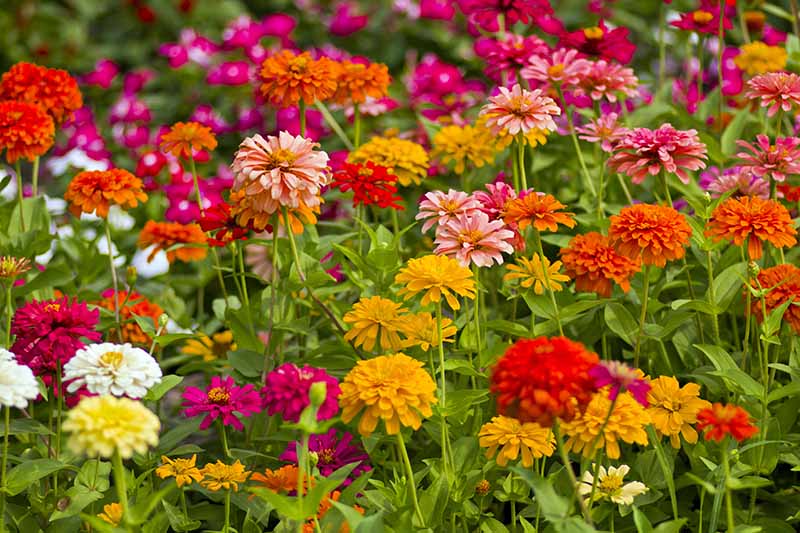
This means you can find a zinnia in pretty much any color scheme you desire, with different patterns, shapes, and sizes ranging from a few inches to several feet tall.
Want to learn more about growing these magnificent annuals? Check out our full guide to growing zinnias.
Cultivated Species
The majority of cultivars originate from the species Zinnia elegans. Native to Mexico, the wild plant produces single flower heads about two inches in length, with purple petals surrounding black and yellow central discs.
The true species is not easy to find, however, since it has interbred with escaped cultivated varieties that have naturalized around the world.
Other cultivated varieties originate from the narrow leafed zinnia, Z. angustifolia. It has single white, yellow, and orange flowers that are a bit smaller in size, an inch or two across, on plants eight to 18 inches tall.
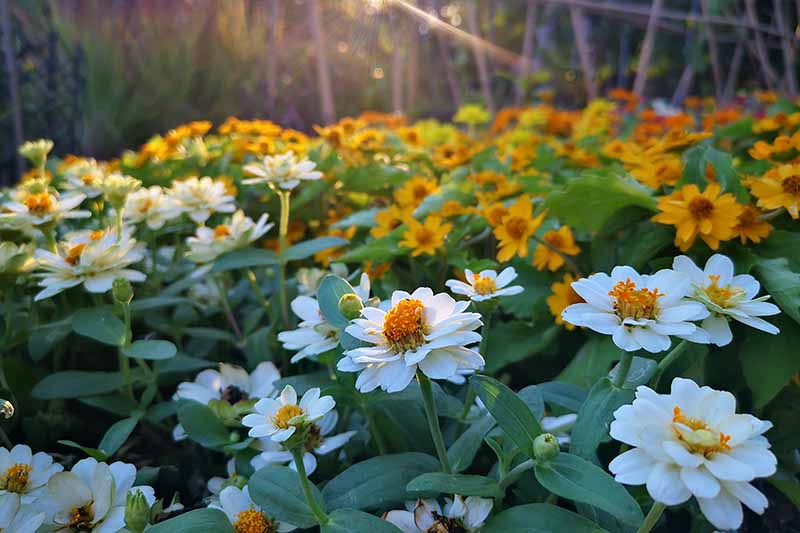
This species is fairly heat and drought resistant, so it’s a good option if you are gardening in a warm climate, or in locations that tend to retain heat like planting areas along city sidewalks.
Z. haageana, also known as Mexican zinnia, tends to be more disease resistant than other species, and features single or double petaled blooms that are red, yellow, or orange in color. Plants grow about 15 inches in height.

Both Z. angustifolia and Z. haageana have been crossed with Z. elegans to create even more varieties.
The choices do indeed seem endless!
Flower Shapes
When selecting types to grow in your garden, it is useful to note that depending on the cultivar, zinnias can have single, semi-double, or fully double flowers, as well as dahlia, globe, and cactus flower forms.
Single petaled varieties contain a solitary row of petals that leave the center of the flower visible. Single flowers are great for attracting pollinators since the pollen is easily accessible by butterflies, hummingbirds, and insects.
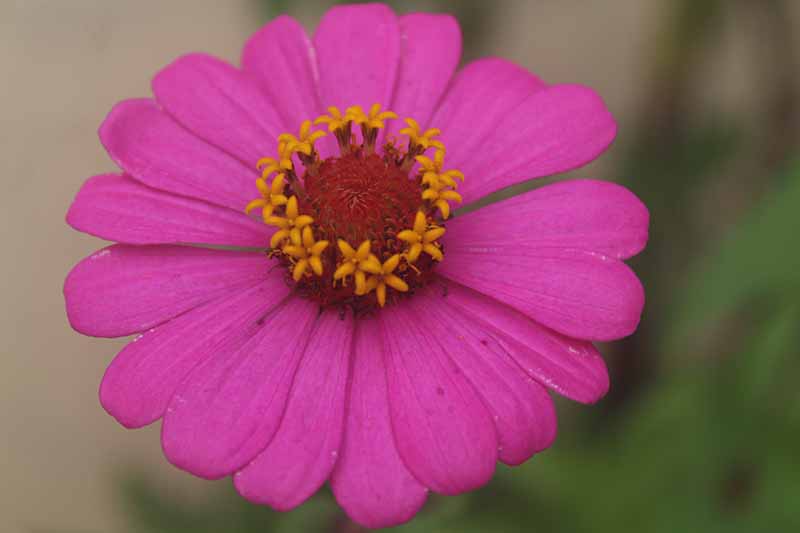
Doubles, by contrast, have several rows of petals and no visible center. These outstanding blooms can be several inches wide.
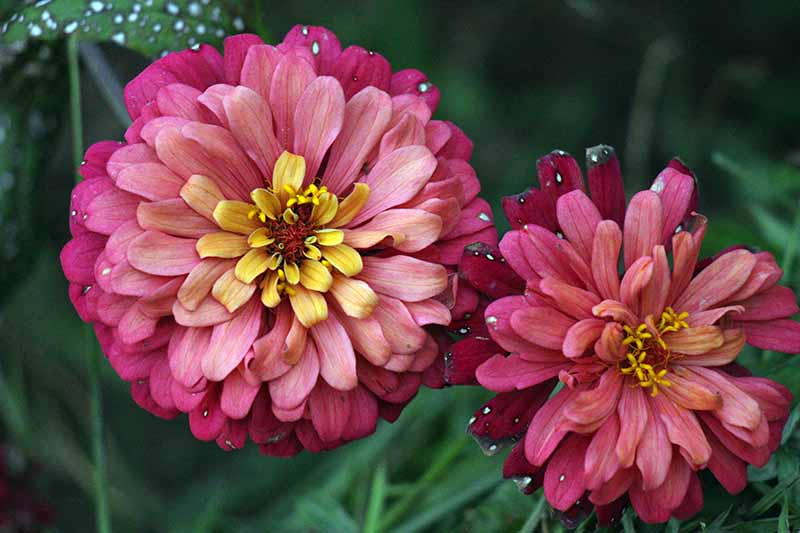
Semi-doubles give you a bit of both. They have a visible central disc as well as two or more rows of petals.
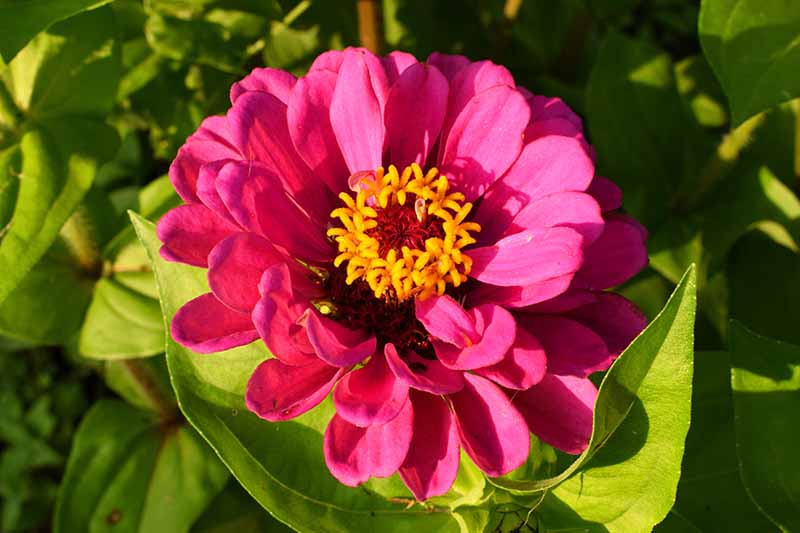
Cactus types have narrow semi double or double quilled petals that twist and curl towards their undersides. These cheerful flowers come in a wide variety of colors and can be up to five inches across.
Their impressive size and uniquely shaped petals make them stunning cut flowers!
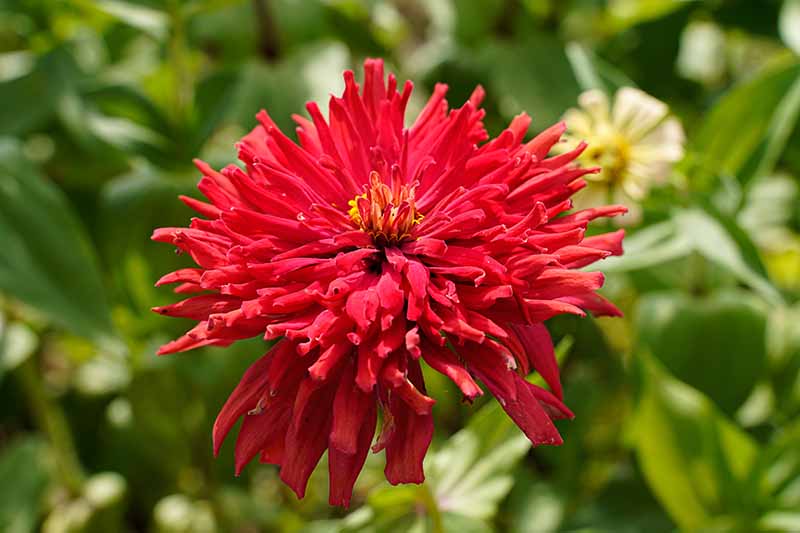
Globe types are named for their spherical flower heads, which are usually a couple of inches in size or more. They can be single or double blossomed. A round, mounded growth habit also makes them a great choice for growing in containers.
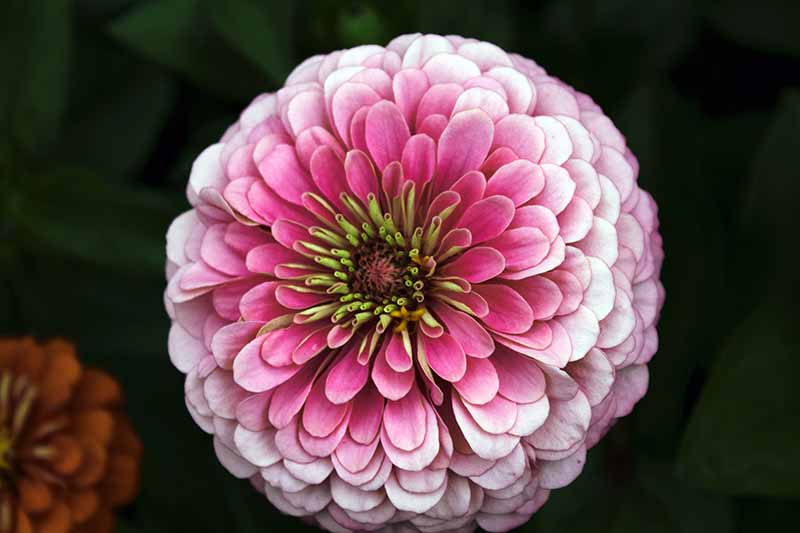
And dahlia zinnias are semi double to double, rounded, dahlia-like flowers with wide, flat petals. These large dramatic blooms typically grow on long stems, and can be up to six inches in diameter.
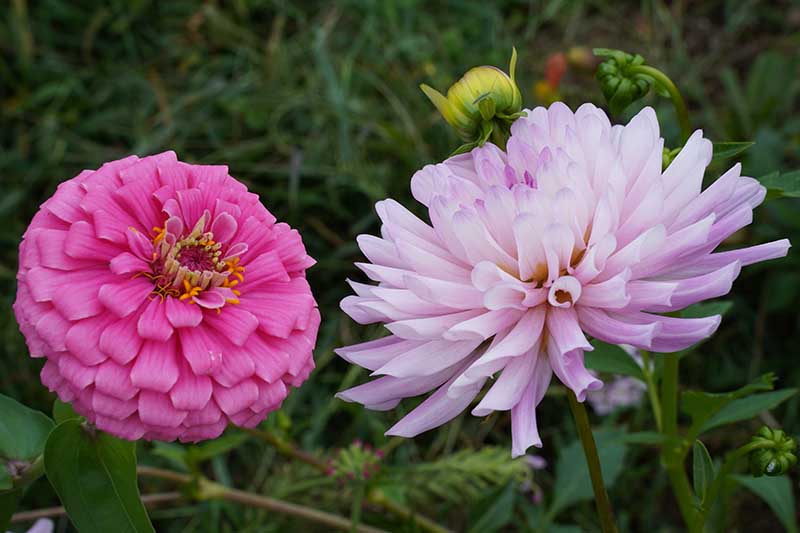
There are also crested or scabiosa flowered zinnias, which have tufted double, semi-double, or single flowers in all sorts of colors, typically with a distinct dark eye.
A cultivar of Z. elegans, these frilly eye-catching blooms are named for their resemblance to scabiosa or pincushion flowers, and can also sometimes be found under the name “Zinerellas.”
Size and Color
Full-sized cultivars can grow up to four feet tall with a spread of several feet, while some dwarf varieties reach only six inches tall and wide.
If you are looking for something to plant in containers or along a border, a compact variety would likely be best.
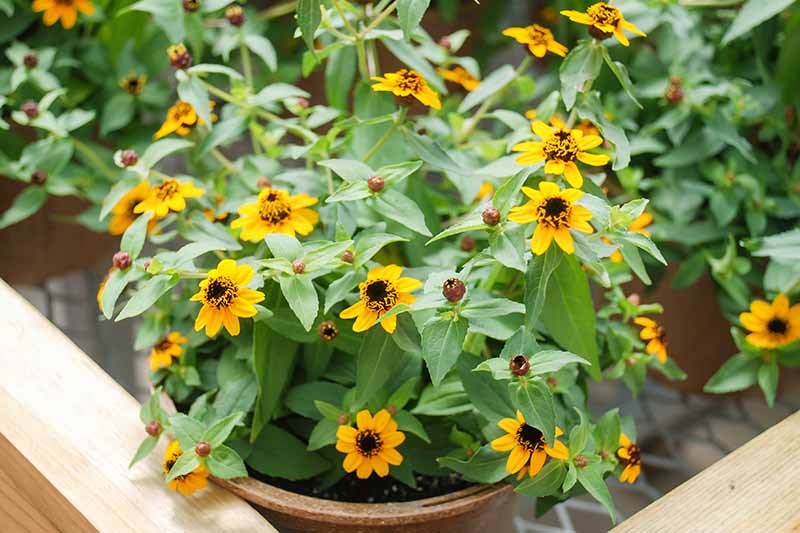
The full-size flowers are spectacular when featured in mixed garden beds, or planted en masse.
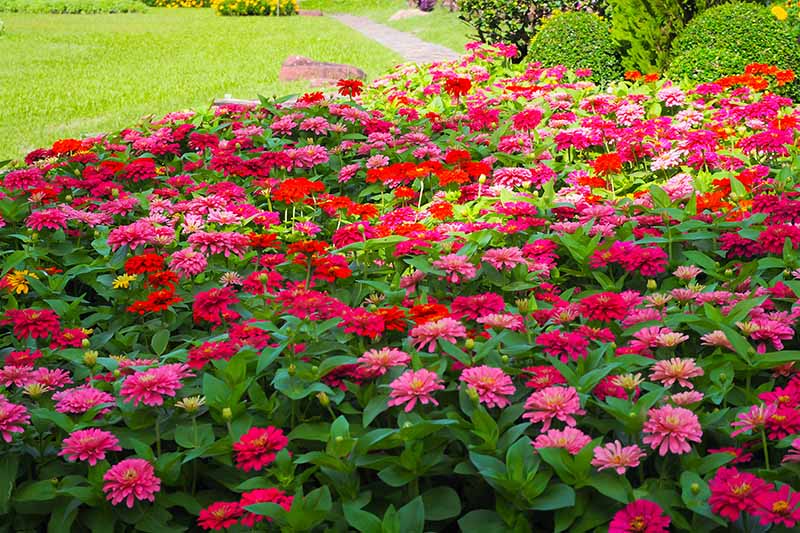
Want to plant a butterfly garden? Full-sized varieties with large flowers, especially those with single or semi-double blooms, are wonderful for attracting pollinators like hummingbirds, bees, and butterflies.
And of course, there are so many different colors and patterns to choose from! You can find these magnificent flowers in almost any color of the rainbow.
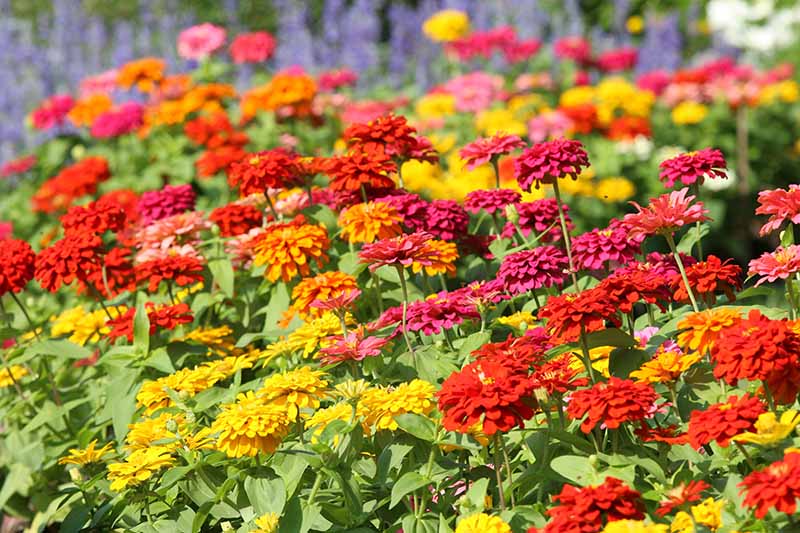
Check out this roundup for some of our favorite zinnia cultivars to grow at home.
Hard to Go Wrong
While it may seem overwhelming, honestly, you can’t really go wrong when selecting zinnia cultivars. I have yet to grow a variety I didn’t love!
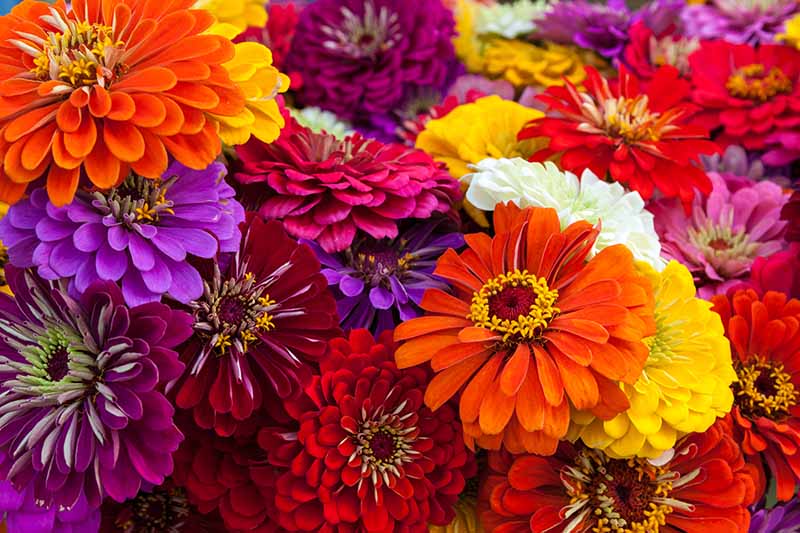
What types of zinnias do you love to grow at home? Please share your favorites in the comments below.
Want to add even more colorful flowers to your garden? Check out these articles next for more great ideas:
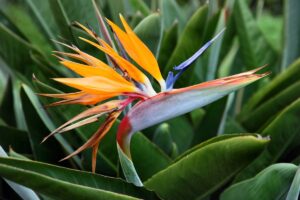
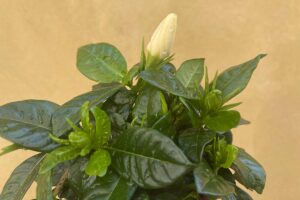

Do you have any zinnia seeds that you can send me?
I don’t have any seeds on hand, but if you check out our zinnia grow guide you can find suggestions on where to find seeds of various types. Good luck!
You can purchase seed packets at Dollar stores, Walmart, Lowes…I’ve had success with every type. Save those seeds too. Best growing wishes
My preference is the double, dahlia type blooms with no visible disks. Can you suggest any specific varieties of this type?
Hi Margie, I agree, I love the dahlia types too!
Our guide to 15 of the best zinnia varieties can provide some suggestions. Also, Eden Brothers has a large selection of different cultivars, including my personal favorite, ‘Benary Giant Wine.’ Let us know which you choose!
How do I keep my zinnias from getting brown spots on the leaves? I live in Florida.
Hello Dawn. The best way to prevent those leaf spots is to only plant zinnias in the same spot once every three years, to deter the fungus that causes them. It can live on in the soil or plant debris from the year before and attack your new zinnias. Also, be sure to give the plants at least a foot or two of space. That kind of air circulation will prevent the wet leaves that encourages fungal diseases. Be sure to buy seeds or starts from a reputable source: Infected seeds can also result in leaf spot. And if you’ve… Read more »
What are the compact Zinnias called? How do you care for them?
Hi Janice,
There are a couple of kinds of compact zinnias:
1) Dwarf cultivars of Zinnia elegans, are just smaller versions of the standard annual bedding plants and have the same care requirements. Dwarf cultivars include ‘Thumbelina’ and ‘Lilliput.’
2) You may be thinking of Zinnia angustifolia, which is a different species. These are sometimes called “creeping zinnias” – they are actually more drought tolerant than Z. elegans varieties, but have the same sun and soil needs.
Hope this helps!